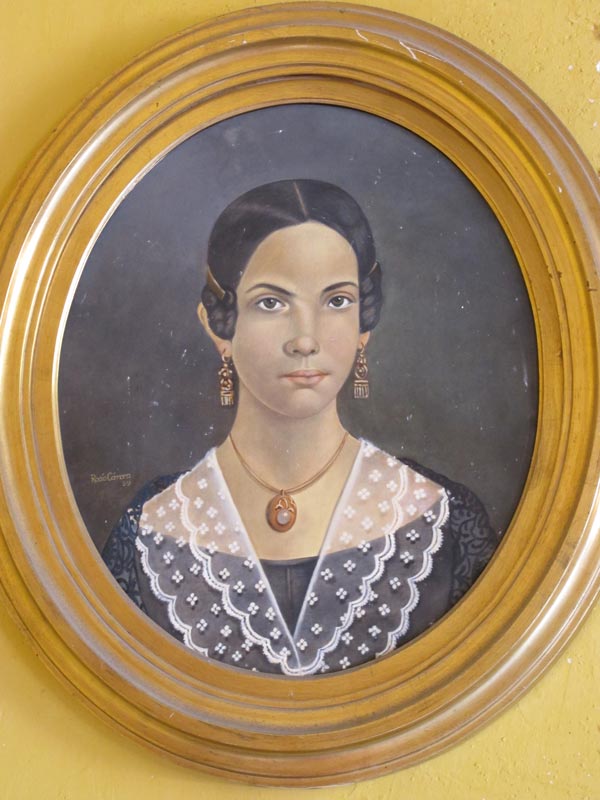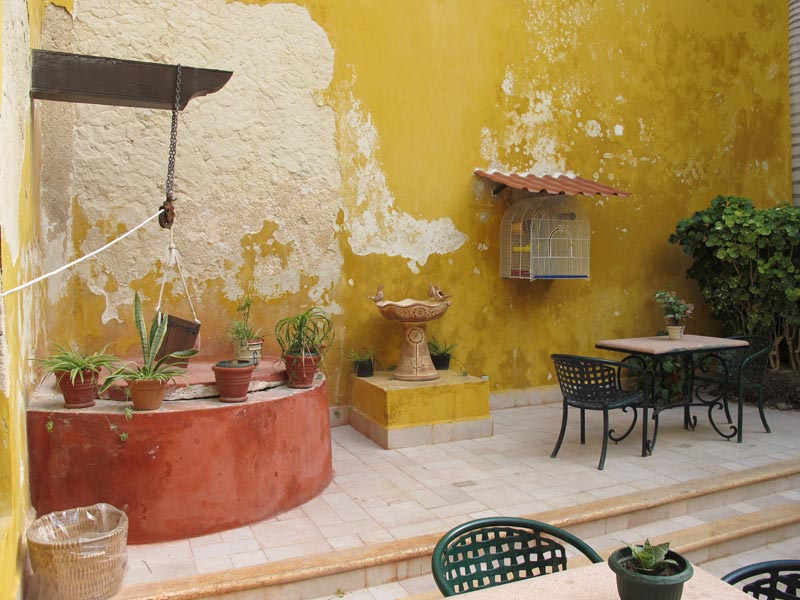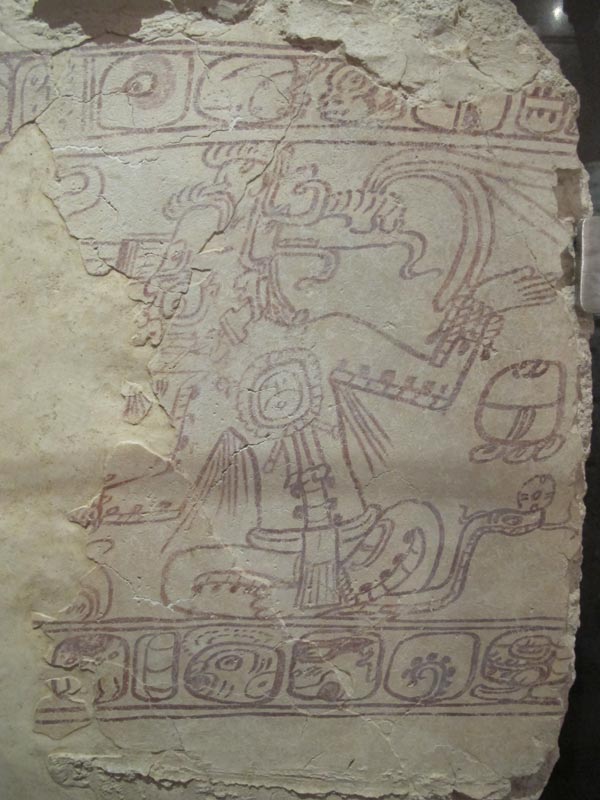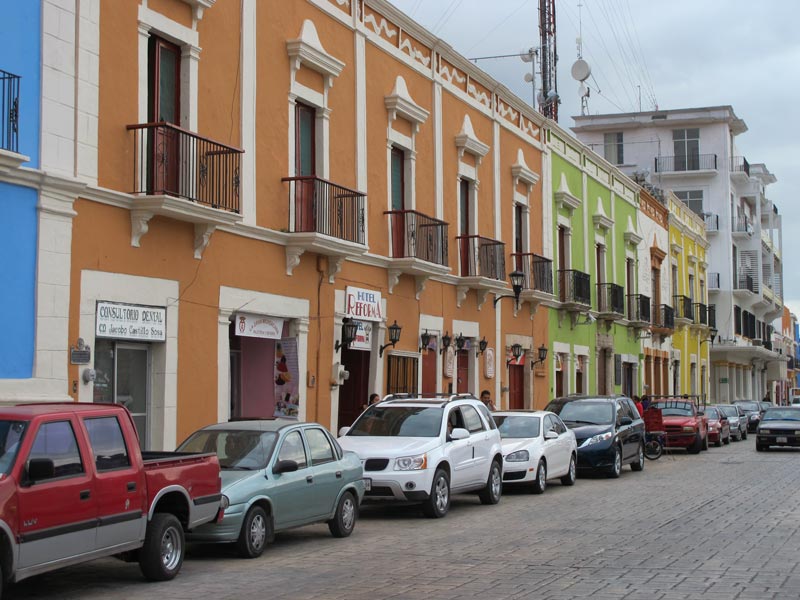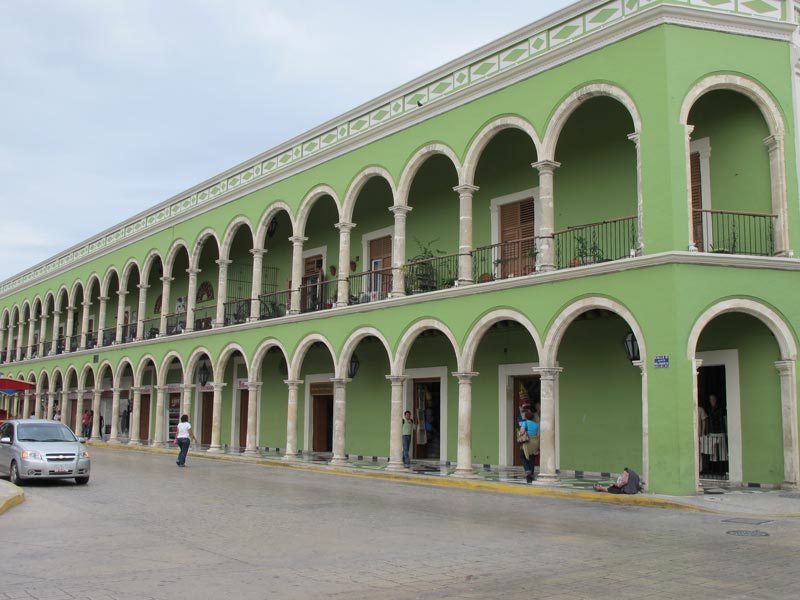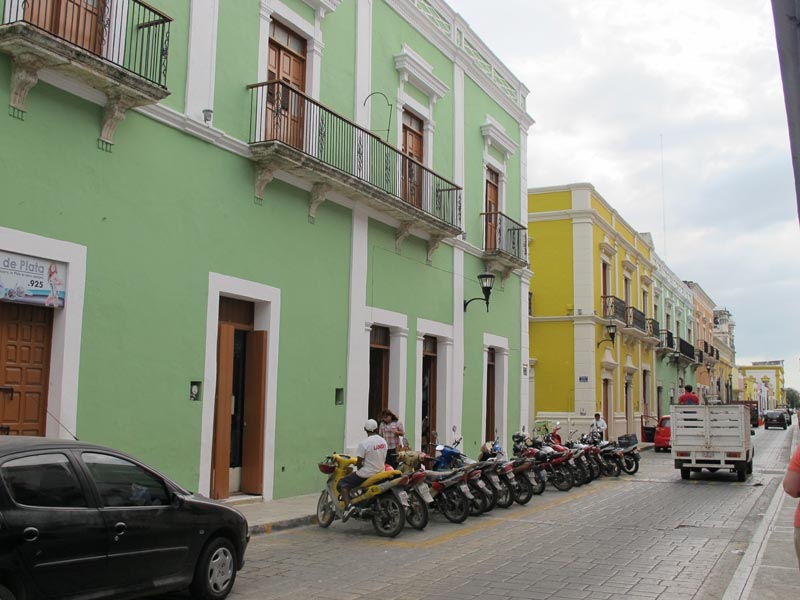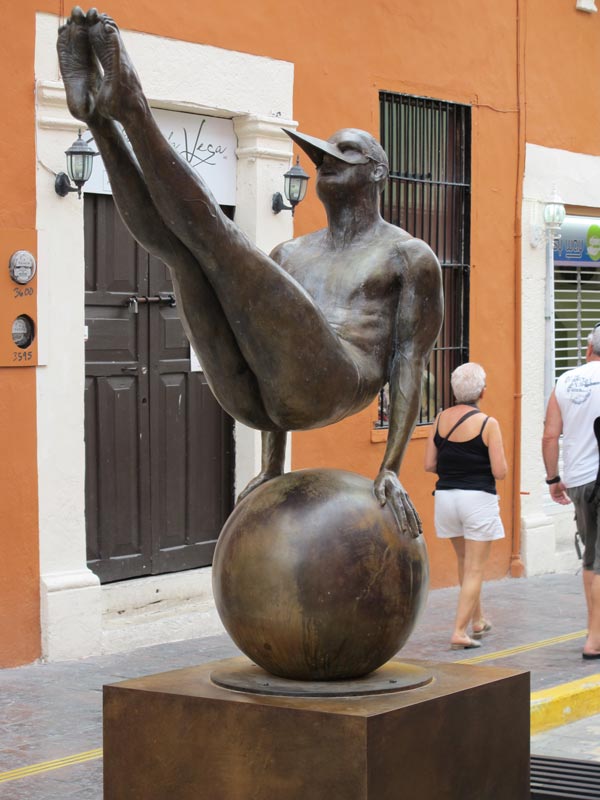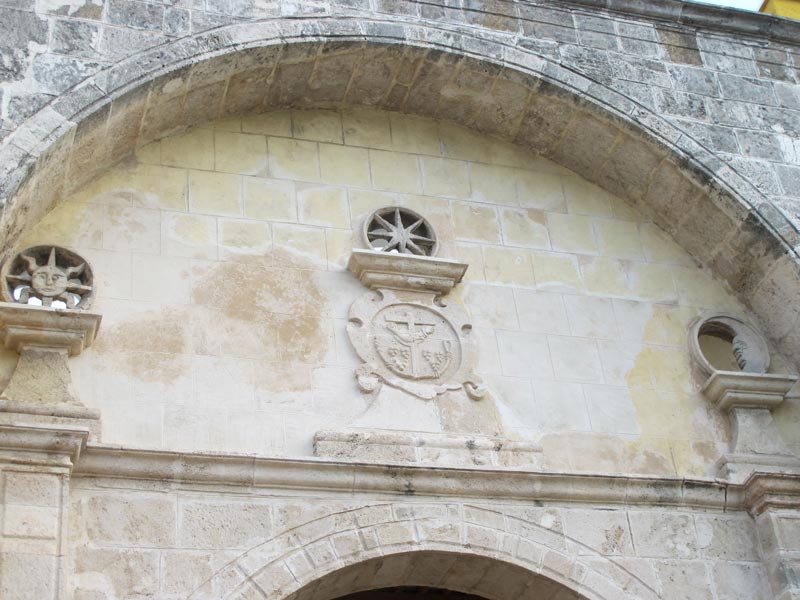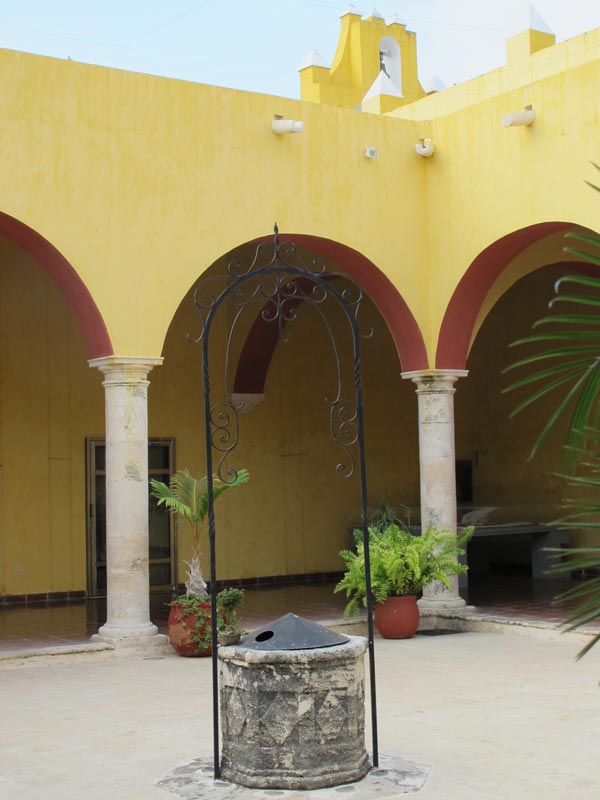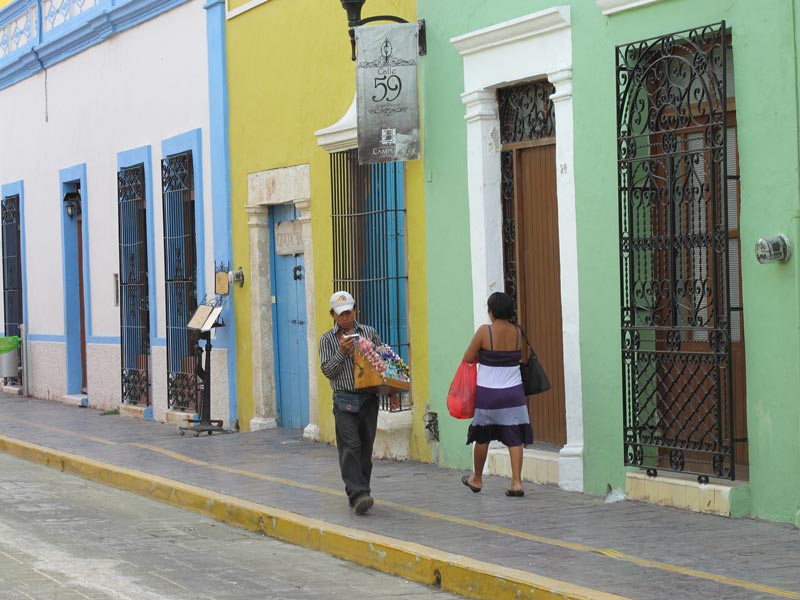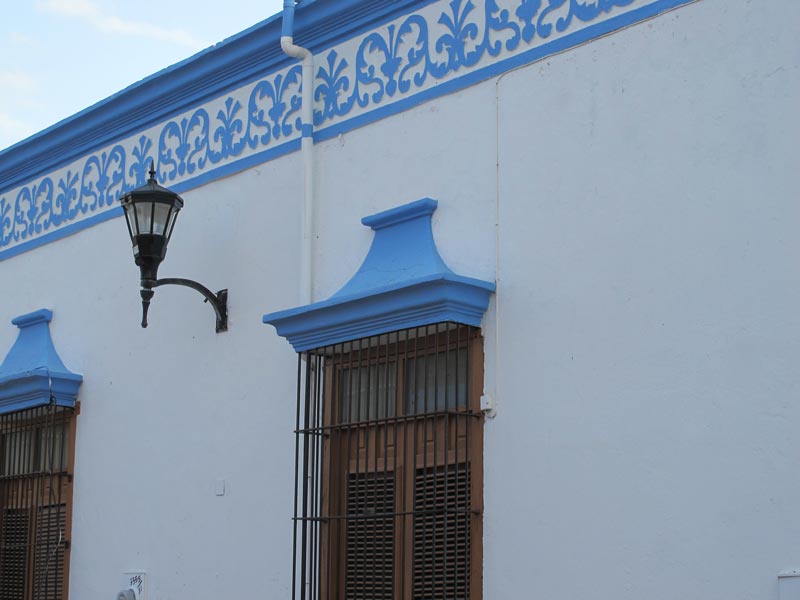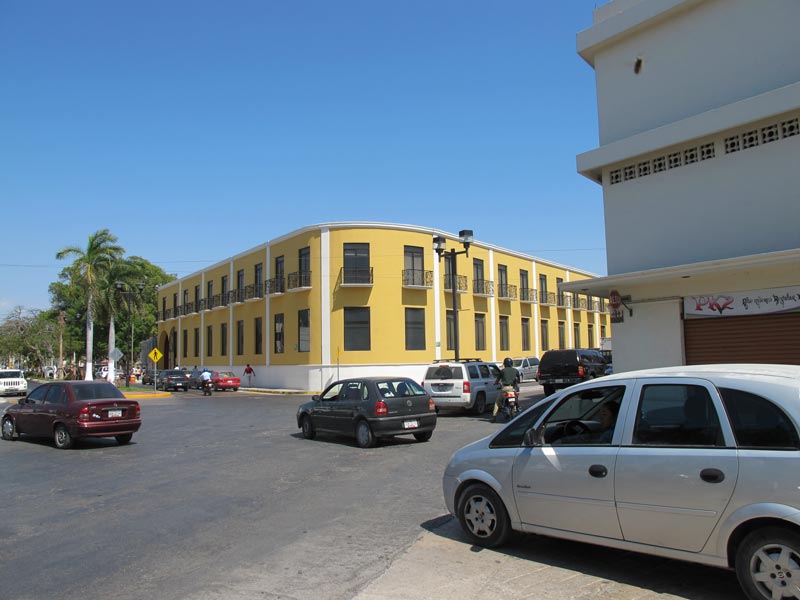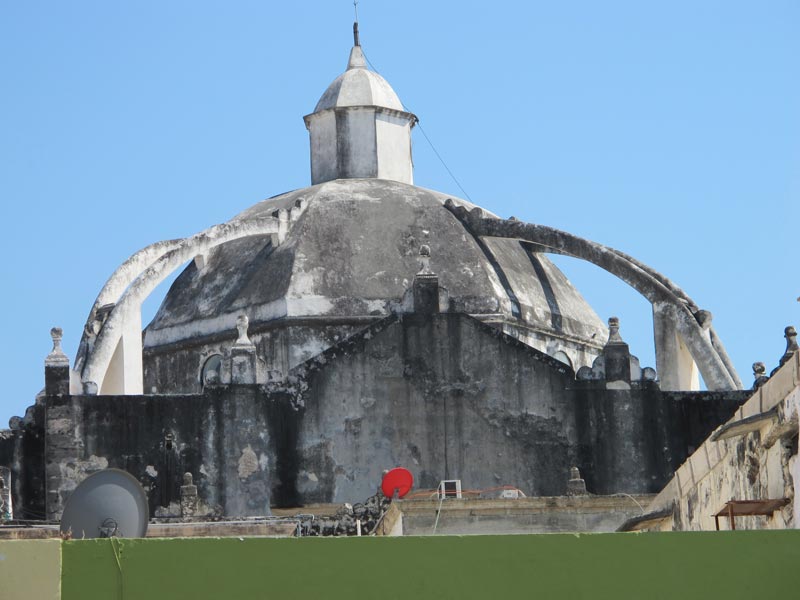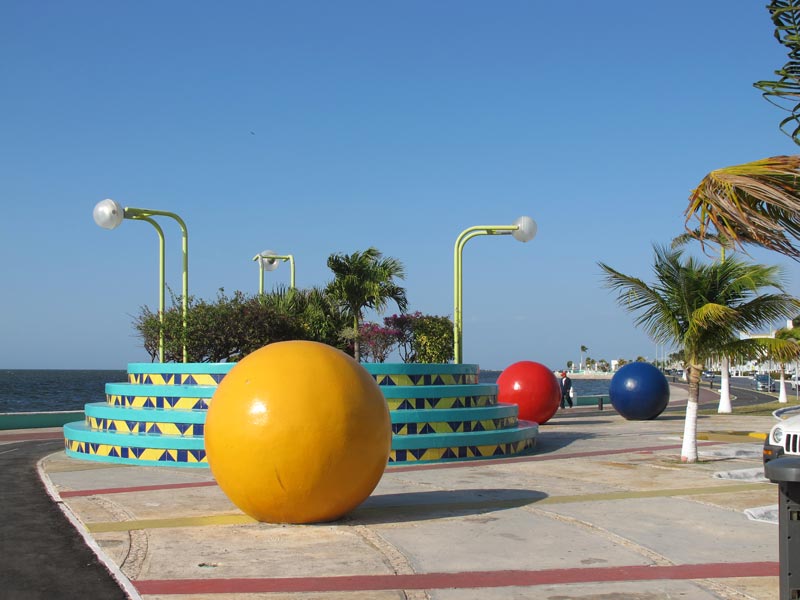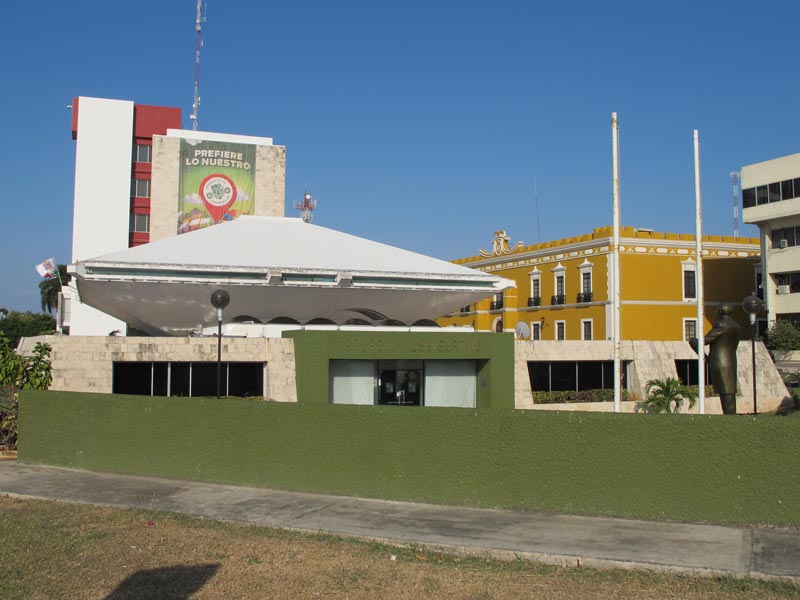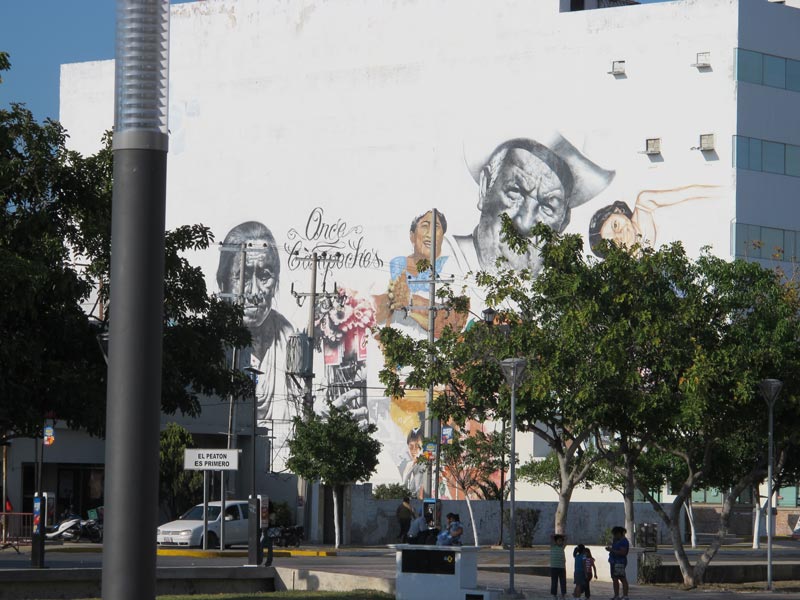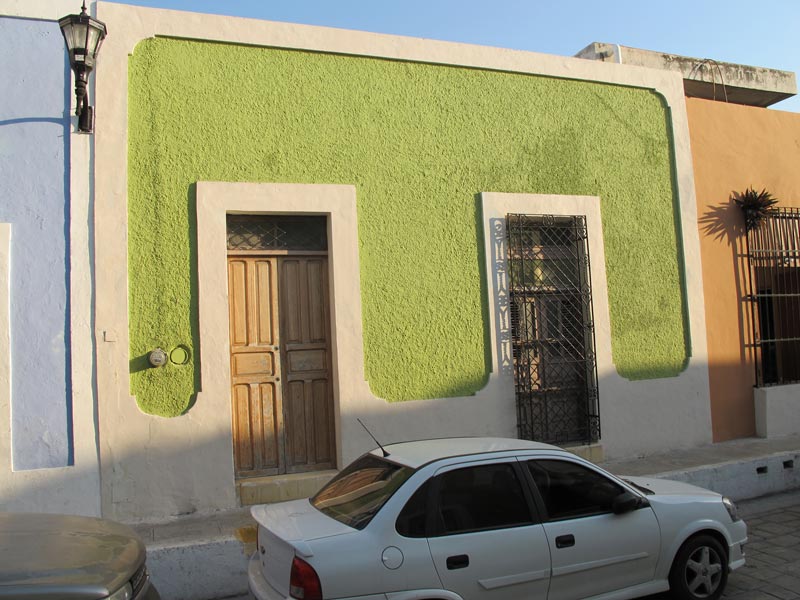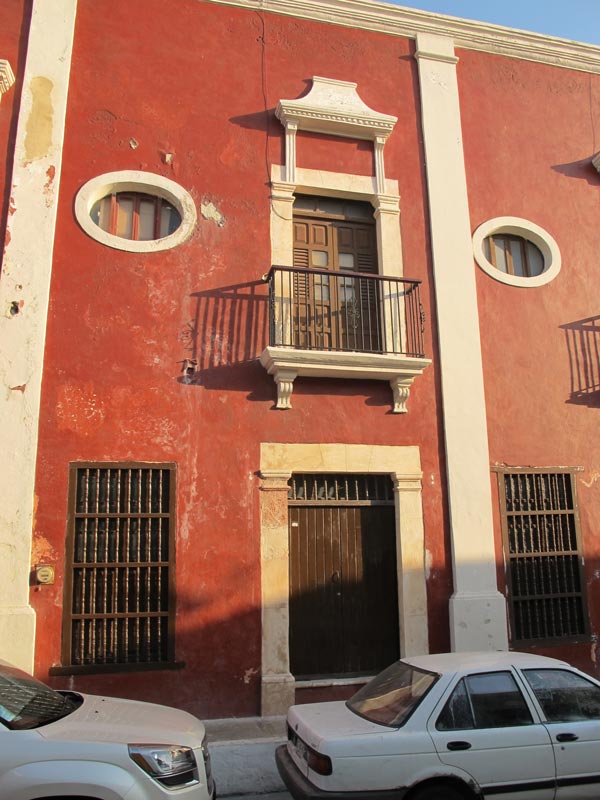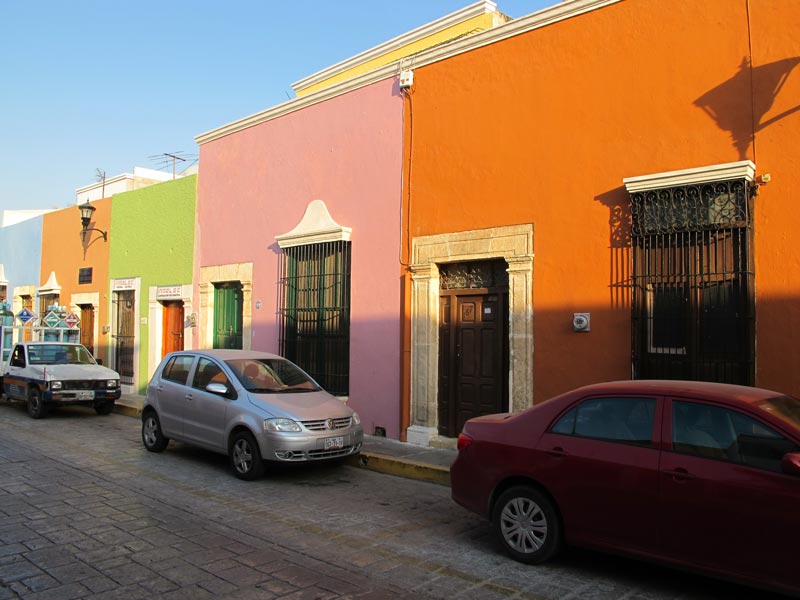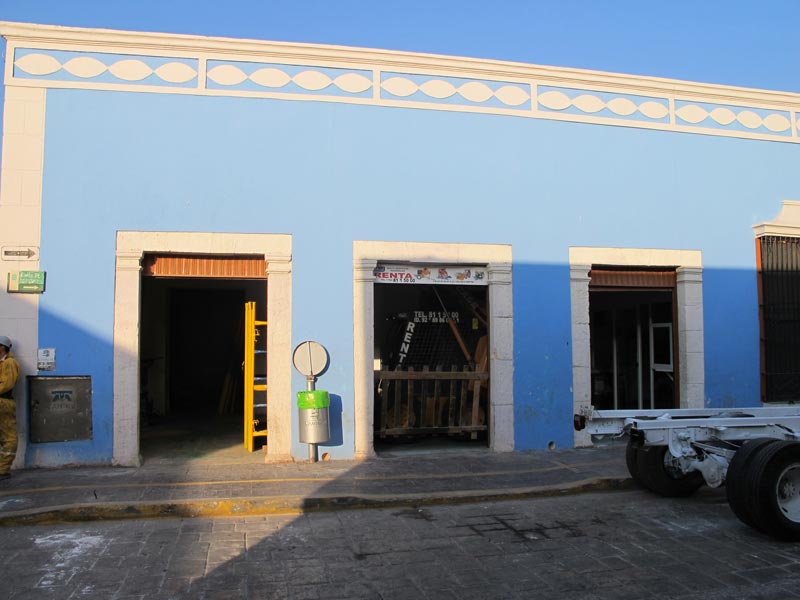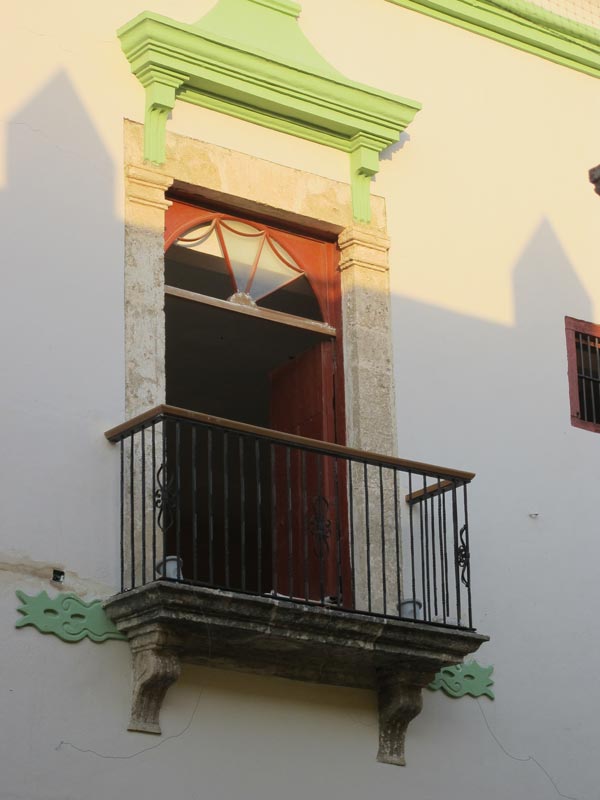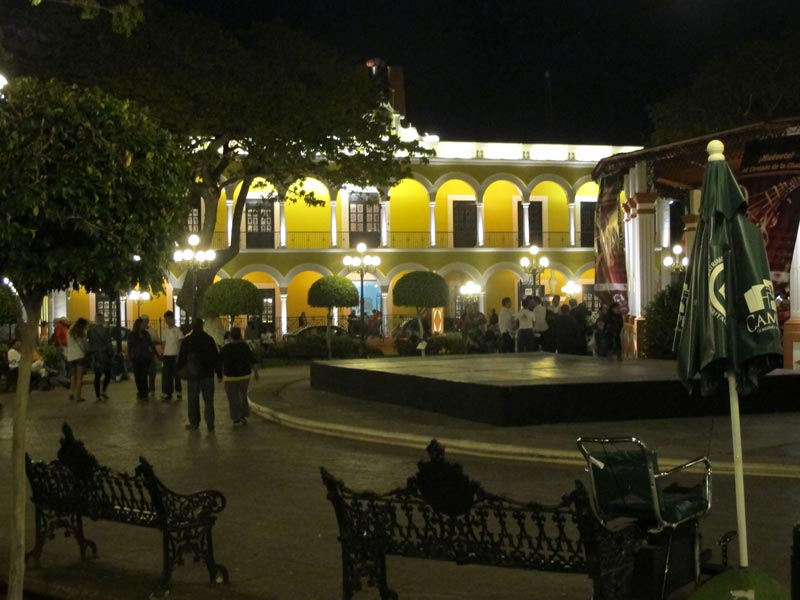After the hustle and bustle of Mérida, we were ready for a change. In planning our trip, we had chosen Campeche as our destination for our last couple of days in Mexico. The guidebook said not many tourists ventured here and that the city was a colonial beauty that was not to be missed.
The capital of Campeche state, the city is reached on a two-and-a-half-hour bus ride from Mérida. On this trip, we took the ADO Primera service: a non-stop cruise along a four-lane highway in a bus that was decidedly more comfortable than the second-class vehicles we had taken from Cancun to Mérida.
(Text continues below photo gallery.)
Photo gallery: Campeche’s centro historico
Click on a thumbnail below to launch the slideshow.
First look
Our first experience in the city was not a good one. The cab which brought us to our hotel was literally falling apart. The driver, who didn’t help at all with our luggage, had to make some adjustments to the back door before it would close. On arrival at the hotel, he cautioned us to avoid the weatherstripping around the trunk but once again made no move to help with the suitcases. Then he tried to shortchange me by 50 pesos. I suppose the 50 pesos was not that big a deal, but the guy pissed me off with his attitude. I managed to convey to him in Spanish that he had shortchanged me. He understood well enough after at first pretending he couldn’t, and returned my 50 pesos. It was the only unpleasant experience we had with anyone on our trip.
After unpacking, we walked down Calle 10 to the zocalo, where we found El Viejo restaurant, recommended in our guide book. We ate probably our best meal in Mexico on the second-floor terrace of a colonial building that overlooked the zocalo. Ana had some fried chaya as an appetizer; it reminded me of the kale with garlic that she sometimes makes at home, except that the texture of the chaya was more crunchy. My appetizer was tacos with mango and a radish-like vegetable whose name escapes me at the moment. It was served with an incredibly hot salsa that forced me to order a beer. Our main course was a Mediterranean-style spaghetti for Ana and a deliciously-prepared quarter chicken for me. Both courses were accompanied by attentive service from two friendly waiters, with whom we managed to make a few jokes about the breeze which threatened to blow our hats away and the heat of the salsa.
Campeche was founded by the son of the founder of Mérida and, for many years, was the Spaniards’ main port on the Gulf of Mexico. The centro historico is well-preserved, making it a very picturesque place. Campeche is home to about 250,000 people but when you’re walking the streets of the historic area, it seems smaller.
After lunch, we went to the zocalo, where a very helpful staffer was eager to point out the sites to a couple of Canadians. We smilingly proclaimed the friendship between our two peoples as he gave us a map of the city, on which he had marked its main attractions. Canadians are an unusual sight in Campeche. A guide later told us that 60% of the tourists in the area were Mexicans, another 30% were from Europe, and only one percent were Canadian. He said there were even fewer Americans. Few people spoke English, but my Spanish was becoming fairly serviceable by this point.
Pirates and chocolate
Campeche is a town that suffered many raids by pirates until a governor built a large fort (which we didn’t see, given our limited time). It’s a walled city, with much of its wall and all of its bastions intact. In fact, a 300-metre section of the wall was being rebuilt during our stay. One of the bastions houses a small Mayan museum, pictures from which you will see if you check out the photo gallery which accompanies this post.
We toured the preserved house of one of the earliest Spanish settlers, an interesting experience. At first, I wondered about the admission fees you pay for everything, including fairly small exhibits like this one. But then it occurred to me that a 10-peso charge translated to less than a dollar in Canadian currency. And the house (House Number 6 in the guidebooks) did contain some interesting historical pieces.
The other highlight of our visit to the city was Mexican chocolate. We remembered the delicious dark chocolate we had bought in Oaxaca and wondered why we hadn’t seen any in the Yucatan; after all, they grew cocoa here. But Campeche boasted a store and cafe called Choco-Ha-Ha which sold chocolate made at local plantations. The tastiest experience here was sampling semi-sweet dark chocolate which had been combined with chili peppers. It’s an interesting taste. We each had a cup of hot chocolate, which we found a little thin after our experiences in Spain. But it was delicious nonetheless and we bought several bars of locally-produced chocolate to take home with us.
A highlight of our visit was a half-day tour of Edzná, perhaps the third most important Mayan site (after Chichen Itza and Uxmal) in the Yucatan. But that’s the subject of another post.






















